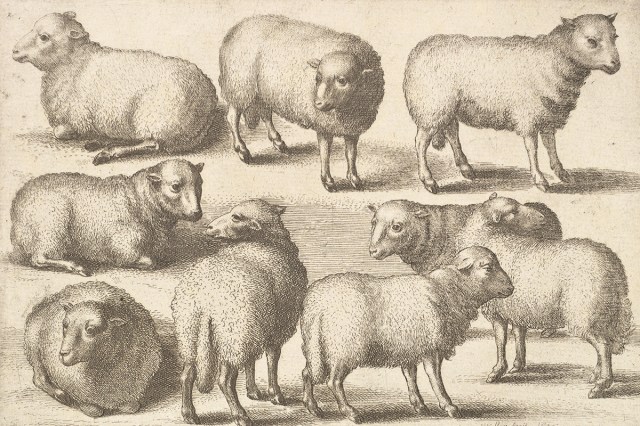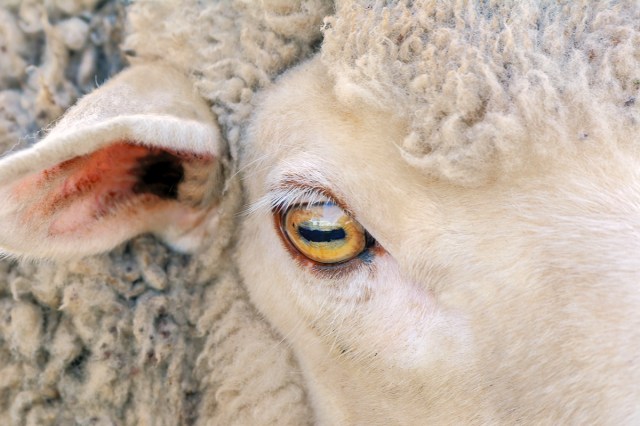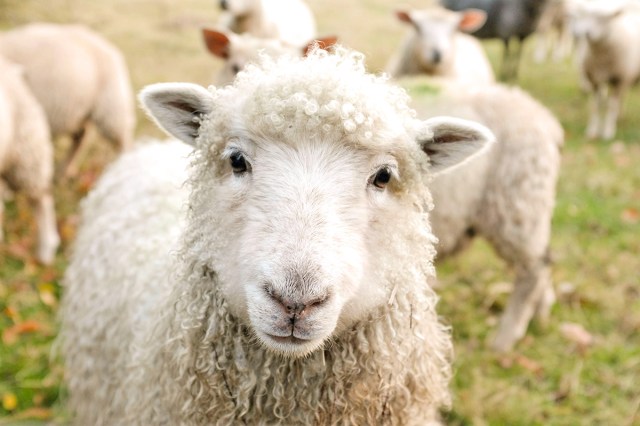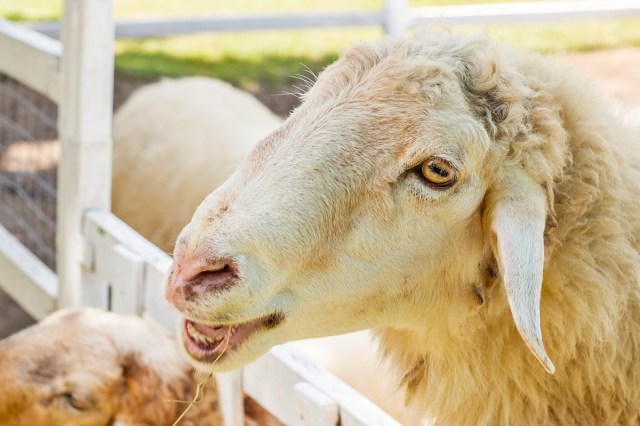
They Were Domesticated 10,000+ Years Ago
Sheep, along with goats, are believed to be the earliest livestock ever domesticated. This groundbreaking agricultural advancement occurred around 10,500 years ago in the Fertile Crescent region of Mesopotamia, an area that includes parts of modern-day Iran, Iraq, Turkey, and other countries.
It’s theorized that domesticated sheep are genetically derived from the wild Asiatic mouflon and Bezoar ibex, which were selectively bred to produce a domesticated animal that could be farmed for its meat. This remained the primary purpose of sheep for millennia, as they weren’t selectively bred for wool until approximately 6000 BCE.
Prior to being selectively bred for their wool, early sheep were hairy (not fluffy), smaller than a typical sheep today, and sometimes had prominent horns. Sheep came to physically resemble the animals we know today no later than 3000 BCE, as evidenced by drawings from Mesopotamian and Babylonian art books of the era.
Domesticated sheep eventually migrated to other continents, making their way into Africa via the Sinai Peninsula between 7,575 and 7,075 years ago. Data shows domesticated sheep arrived in Europe via southwestern France by around 5000 BCE, and they were later brought to the Americas during Christopher Columbus’ second voyage in 1493.

They Have Rectangular Pupils
Unlike the circular pupils seen in humans and most animals, sheep’s pupils are rectangular (as are goat’s). This odd optical quirk actually functions as a useful defense mechanism: The horizontal pupils increase the animal’s peripheral vision. Most sheep can see 270-320 degrees horizontally — by comparison, humans with normal vision can only see about 160-180 degrees horizontally without moving their head. In practice, this greater field of vision allows sheep to easily spot potential predators while they have their heads down grazing in a field.
Sheep also experience a concept called “cyclovergence.” In layman’s terms, this means a sheep’s eyeballs can rotate to be parallel to the ground at all times, keeping their pupils horizontal instead of vertical. This is ideal for monitoring the surrounding environment, as sheep largely have to worry about predators running up on the ground and not diving down from above.

A Sheep Was the First Mammal Cloned From Adult Cells
Sheep have played an important role in the study of cloning, starting in 1984, when a U.K.-based research team cloned a sheep from an embryo cell. In 1995, researchers at Edinburgh’s Roslin Institute cloned two sheep named Megan and Morag, and six more sheep were cloned from embryonic and fetal cells the following year.
Using embryonic cells was thought to be essential at the time, as they contained all the genetic data necessary for creating a new creature. Then in 1996, the cloning world was turned on its head with the creation of Dolly the sheep, named after country music superstar Dolly Parton. Dolly was born at the Roslin Institute on July 5, marking the first time a mammal was successfully cloned using an adult cell instead of an embryonic one.
Prior to this, researchers assumed adult cells only contained genetic data relevant to the part of the body it came from. But Dolly — who was created using a single adult mammary cell — proved that adult cells contain the necessary genetic data to produce an entire animal and not just one part of the body.
More Interesting Reads

They Can Recognize Human Faces From Photographs
Sheep are highly perceptive creatures, so much so that they can recognize humans, even in images taken of the same person at different angles.
In a 2017 study conducted by the University of Cambridge, researchers showed sheep pictures of various celebrities such as Barack Obama and Emma Watson. The animals were then shown the images alongside similar-looking people as well as images of the celebrities taken at various angles. In the end, the sheep were able to successfully identify the celebrity they’d been trained to recognize eight out of 10 times.
The study also showed that sheep could also recognize photographic portraits of their handlers compared to similar-looking strangers without any prior training.

They Don’t Have Upper Front Teeth
In a dental sense, sheep are just about the opposite of beavers, as they lack upper front teeth. All told, sheep have eight incisors on the front lower jaw plus 24 molars, but nothing on the front and center of the upper jaw.
Instead, sheep have a “dental pad,” which is a thick, tough, fibrous layer of tissue that helps them graze on forages such as grass and hay. When eating, sheep press their lower teeth against the dental pad to grip and sever blades of grass, which they then use their molars to grind down.
This trait is present in most ruminants — a suborder of mammals that includes giraffes and cows in addition to sheep. As sheep age, they tend to develop what’s known as a “broken mouth,” in which their lower incisors either bend or fall out. Even when that happens, sheep can use the hard gums on their upper and lower jaws to grip and eat grass and other nutritious fibers.

They Produce Up to 30 Pounds of Wool Annually
More than 1.7 million metric tons of shorn wool are produced worldwide each year, an estimated 90% of which comes from domesticated sheep, with animals such as goats, rabbits, and alpacas accounting for the remaining 10%. Wool-producing sheep also make up the vast majority of sheep species — roughly 90%.
The average wool-producing sheep produces just under 10 pounds of wool annually, which, according to the International Wool Textile Organization, equals enough material for six sweaters or enough fabric to cover a large sofa.
But beyond the average numbers, sheep can produce anywhere between 2 to 30 pounds of wool each year — a range that’s largely due to genetics, as some breeds produce more wool than others. For instance, Delaine Merino sheep are highly regarded for producing high-quality wool, and lots of it.












